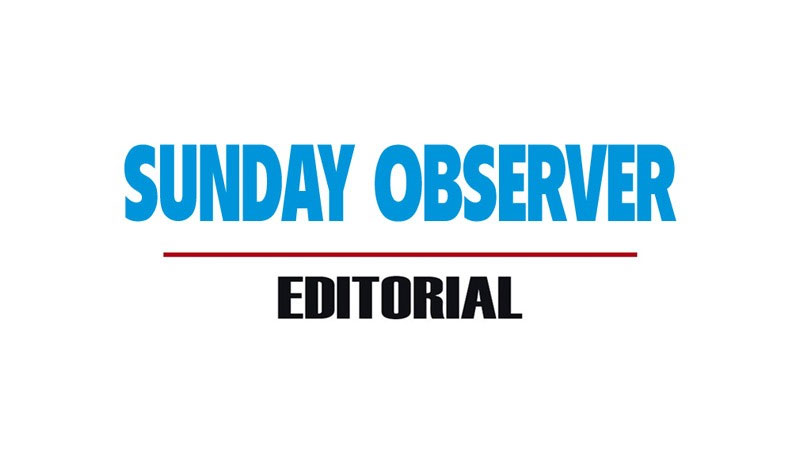“How inappropriate to call this planet Earth, when it is clearly Ocean”. These famous words were spoken by none other than Sir Arthur C Clarke, the leading science fiction author who made Sri Lanka his home. What he said was absolutely correct, because the ocean covers over 70 percent of the planet. It is where life on Earth began in a primordial soup – in fact, we still carry a little bit of the ocean inside all our cells. It is our main life source, supporting humanity’s sustenance and that of every other organism on Earth – even the ones living on land.
The ocean literally gives us life as it produces at least 50 percent of the planet’s oxygen. Oceans absorb about 30 percent of carbon dioxide produced by humans, buffering the impacts of Climate Change and Global Warming. It is home to most of Earth’s biodiversity, and is the main source of protein (seafood) for more than a billion people around the world. The ocean is also a key component of the global economy with an estimated 40 million people projected to be employed in ocean-based industries by 2030.
But the ocean is now in need of life support itself. With 90 percent of the big fish depleted, particularly due to Illegal, Unreported and Unregulated (IUU) fishing, and 50 percent of coral reefs destroyed, humans are taking more from the ocean than can be replenished. Countries, especially those with a coastline, need to work together to create a new balance with the ocean that no longer depletes its bounty but instead restores its vibrancy and literally brings it new life. Actually, even the landlocked countries benefit from the ocean as most of their imports and exports are routed through the ocean via neighbouring coastal nations.
“Wonder: Sustaining what sustains us” is the theme for World Oceans Day 2025, which falls today (June 8). The day celebrates the wonder that the ocean inspires in us: its beauty, its mystery, and its vital role in our lives and on the planet. This day reminds us of our deep connection with the sea and calls for its protection through decisions guided by curiosity, wisdom, and a commitment to collective well-being.
World Ocean Day reminds every one of the major role the oceans have in everyday life. They are the lungs of our Planet and a major source of food and medicine and a critical part of the biosphere. The purpose of the Day is to apprise the public of the impact of human actions on the ocean, develop a worldwide movement of citizens for the ocean, and mobilise and unite the world’s population on a project for the sustainable management of the world’s oceans.
This year is marked by the UN Decade of Ocean Science and the celebration of the World Ocean Conference, co-hosted by the Governments of France and Costa Rica, which will take place from June 9 to 13 in Nice, France.
The 2025 UN Ocean Conference will focus on “Accelerating action and mobilising all actors to conserve and sustainably use the ocean”. It will seek to support the implementation of Sustainable Development Goal 14 (SDG14), with three main priorities, to produce an ambitious Nice Ocean Action Plan that includes: Working towards completion of multilateral processes linked to the ocean; Mobilising finance resources for the SDG14 and supporting the development of a sustainable blue economy and strengthening and disseminating knowledge linked to marine sciences to enhance policy-making.
The conference will search for solutions to conserve and sustainably use the oceans, seas, and marine resources. It will bring together Governments, organisations, financial institutions, academia, the private sector, and civil society, to forge partnerships, share solutions, and adopt the inter-governmental “Nice Ocean Action Plan”—a concise, action-oriented declaration with voluntary commitments—to drive urgent, collective efforts for healthier, more resilient seas.
International cooperation has already resulted in concrete action – In March 2023, UN Delegates reached a historic agreement on protecting marine biodiversity in international waters after nearly two decades of talks. Already being referred to as the ‘High Seas Treaty’, the legal framework would put more money into marine conservation and cover access to and use of marine genetic resources. However, the agreement must be ratified by more countries to enter into force.
Sri Lanka, as an island, must do more to protect the ocean. Ocean Science should be included in the school curriculum at least from Grade 6. Sri Lankan universities must undertake more research on the oceans, which still remain mostly unexplored. We do know more about the far side of the Moon than about the depths of our oceans. Millions of marine life forms have still not been documented or even discovered. Autonomous Underwater Vehicles (AUVs) could be the best way of exploring the vastness of the ocean, which still has many secrets to give up.
Readers’ Rights
If you believe that any news or articles published in this newspaper have prejudiced you, you have the right to file a complaint with the Sri Lanka Press Council, No. 325, Bauddhaloka Mawatha, Colombo 7. Tel: 011 2693272, Fax: 011 2693271, email: [email protected]







